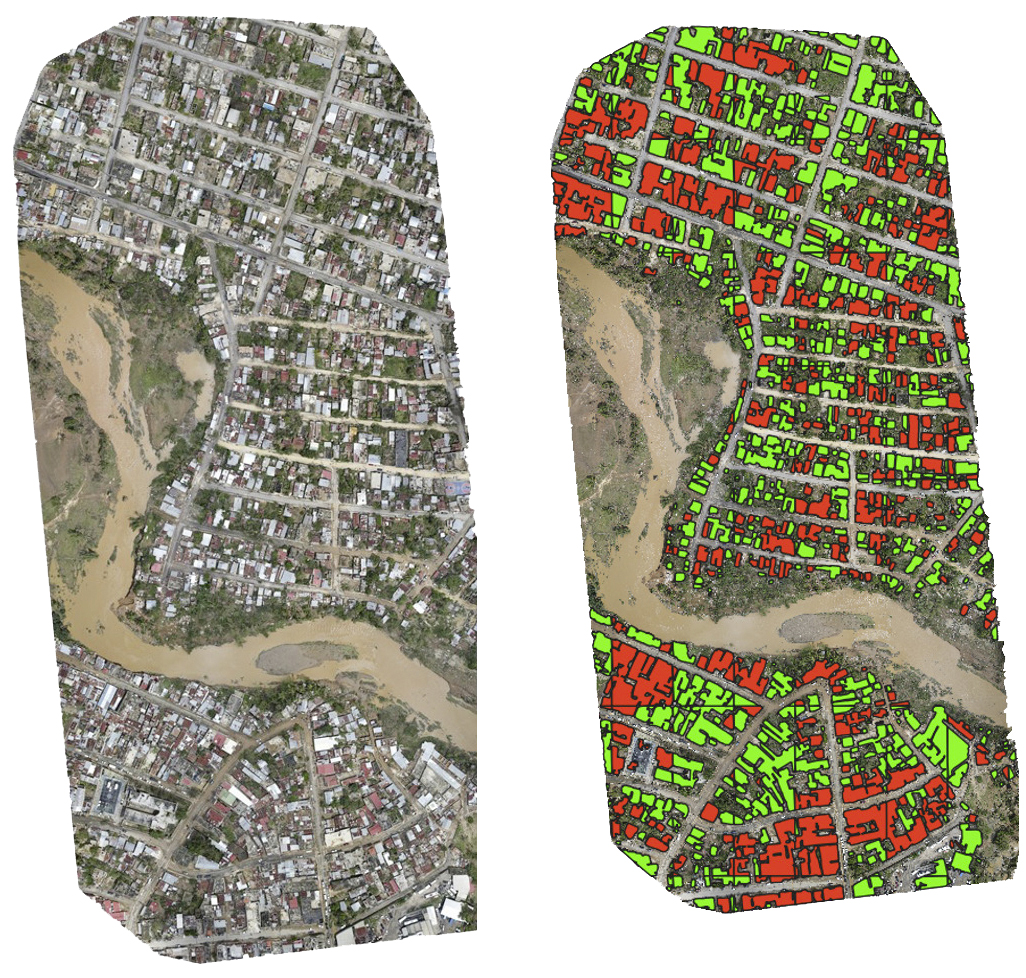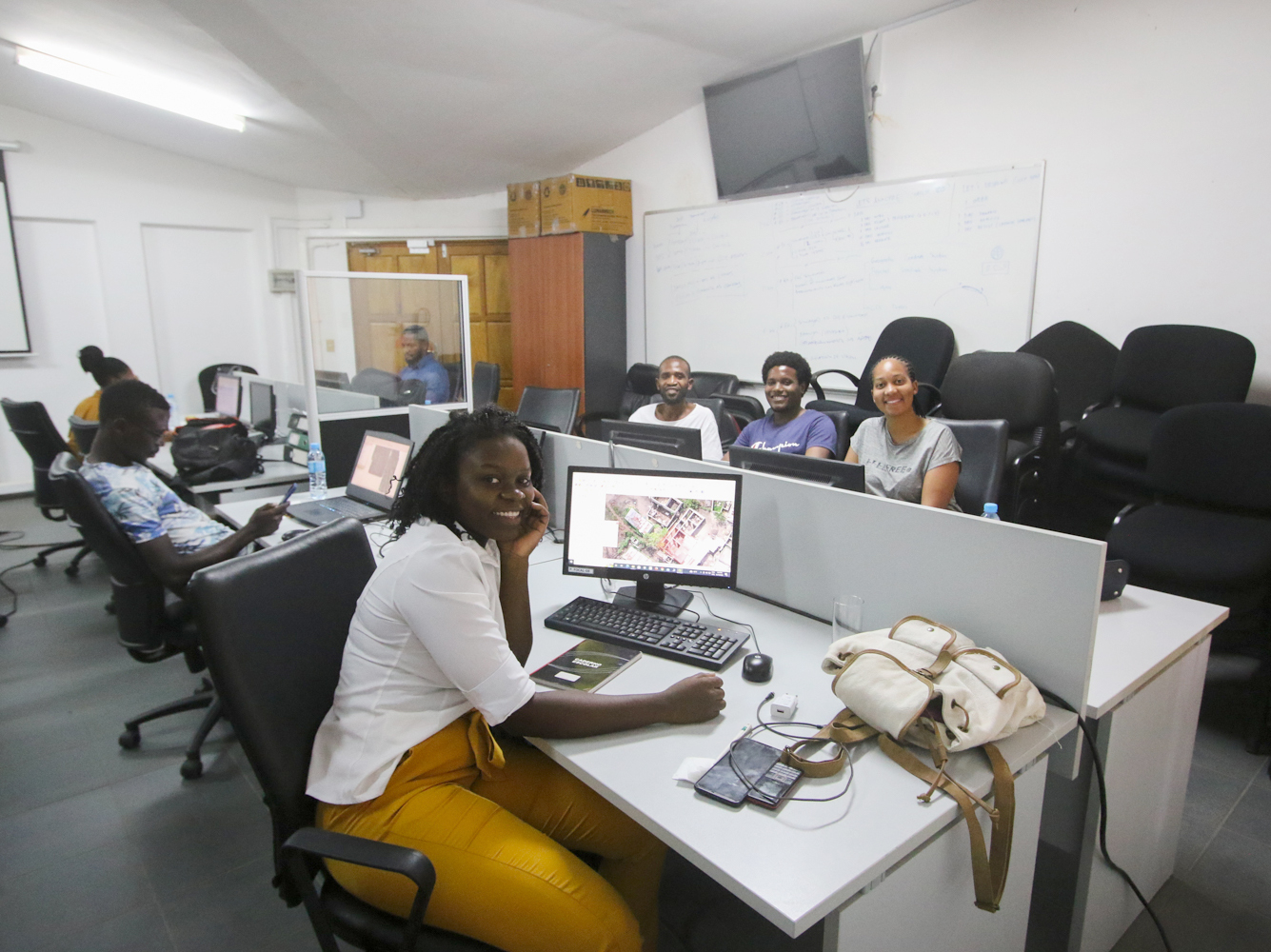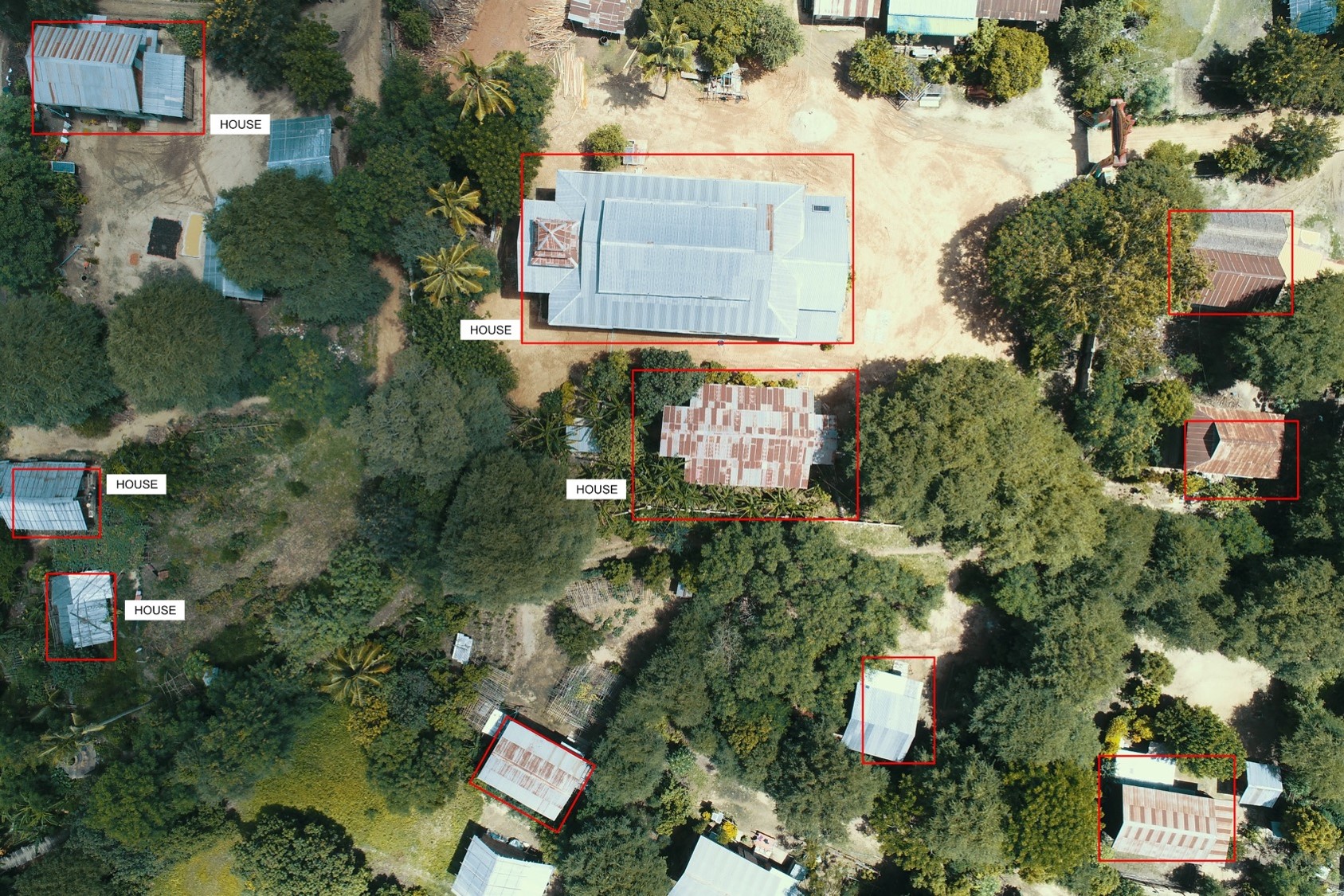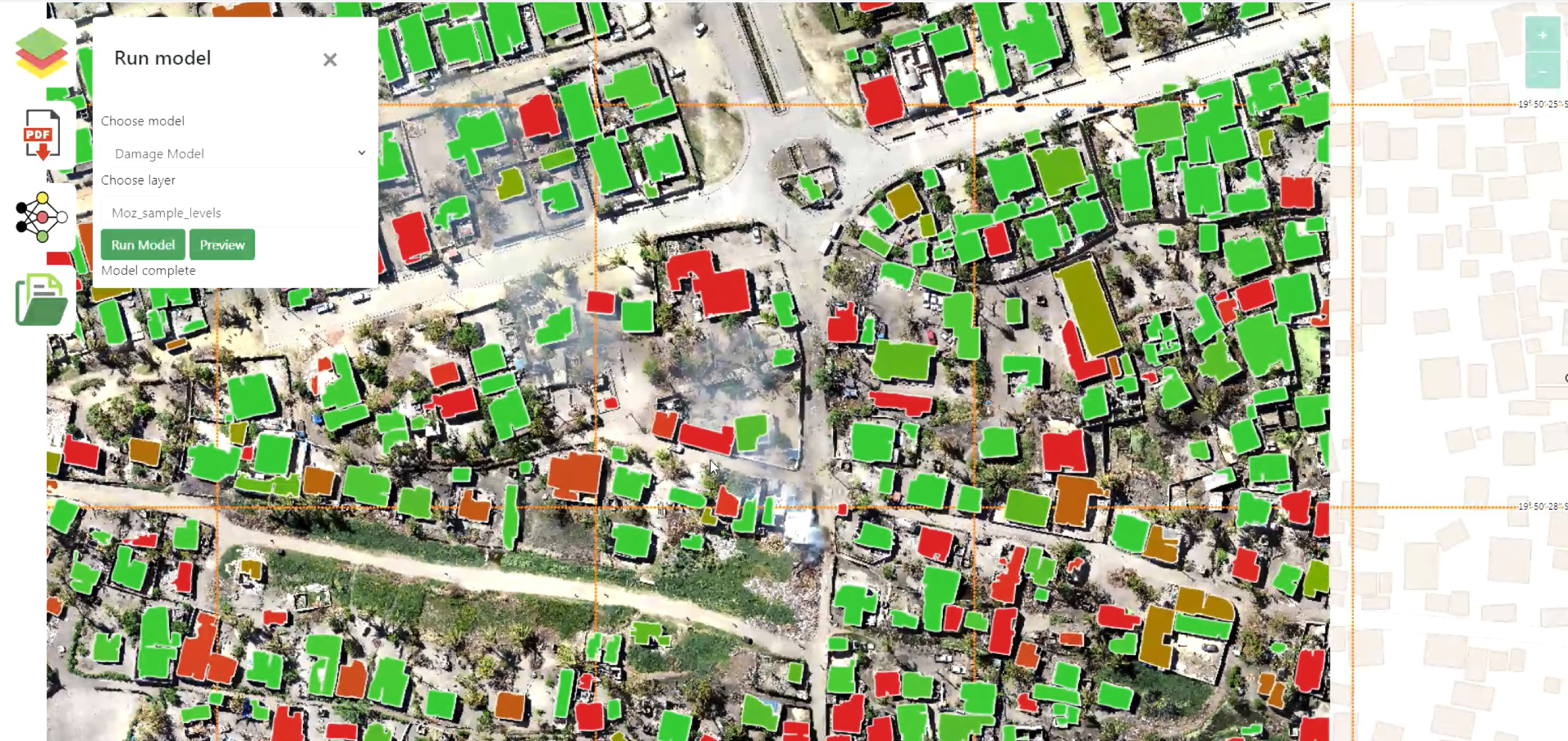In the event of a disaster, be it a flood, earthquake or hurricane, providing humanitarian aid to those in need is of crucial importance. In such cases, the World Food Programme (WFP) sends teams to supply the affected population with food. As a result, the teams of aid organisations are faced with the challenge of finding their way around devastated areas in the shortest possible time. One way of obtaining information for the distribution of relief supplies is to record the number of destroyed buildings and use this to estimate the number of people in need of assistance. WFP teams are using drones to generate imagery, which is then analysed manually. A team from our department »Image Processing« is developing software that will get humanitarian aid to the right destination faster. The software analyses the images taken by the drones, whereby all buildings are detected by an AI and their degree of destruction is determined.
EDDA is a fully automated AI software that analyses drone images for the WFP on a laptop with artificial intelligence (AI). The software provides an evaluation of
- the extent of the disaster
- the localisation of people in need of help
- and the identification of rescue routes in real time




